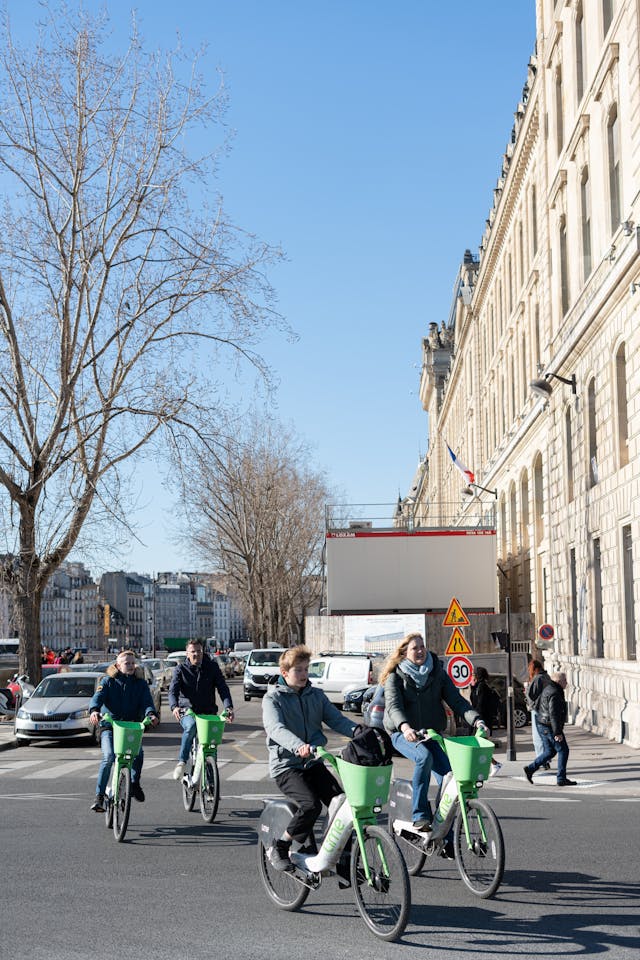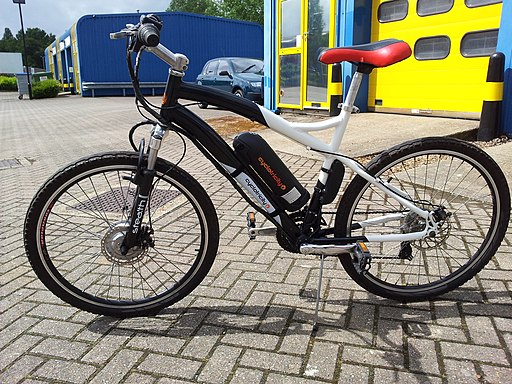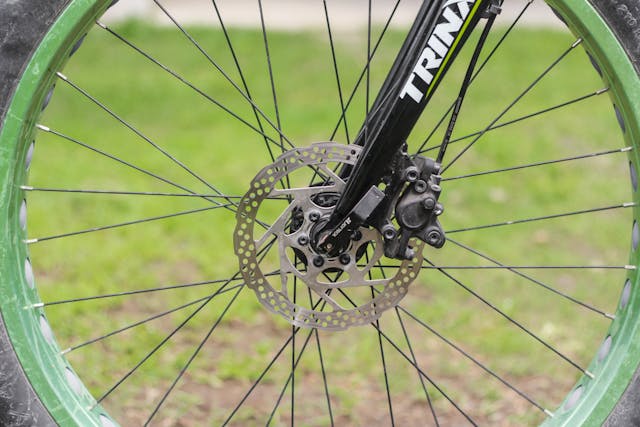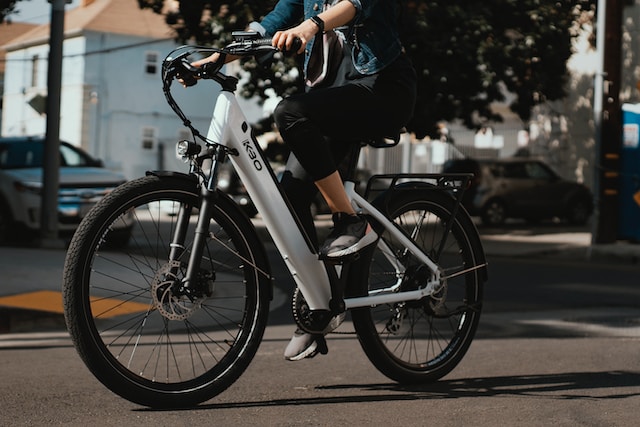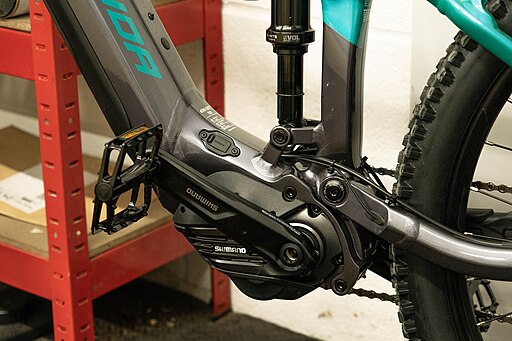Mastering Electric Bike Commuting Etiquette: Navigating Urban Spaces with Confidence
Electric bikes (e-bikes) have surged in popularity as a sustainable and efficient mode of transportation, particularly in urban environments. Their ability to effortlessly navigate through city streets, bypass traffic congestion, and reduce environmental impact has made them a favored choice for commuters worldwide. With this growing trend, it becomes imperative for riders to not only master the mechanics of riding an electric bike but also to understand and adhere to proper etiquette for safe and harmonious navigation of urban spaces.
In bustling city centers where roadways are shared by pedestrians, cyclists, motorists, and public transportation, mastering electric bike commuting etiquette is crucial. It’s not just about reaching your destination swiftly; it’s about doing so responsibly and respectfully, ensuring the safety and comfort of all road users. As e-bikes become increasingly integrated into the urban landscape, knowing how to navigate city streets with confidence and courtesy becomes essential for a positive commuting experience.
By understanding and practicing proper etiquette, electric bike riders can contribute to a more inclusive and cooperative environment on the roads. From sharing bike lanes with fellow cyclists to safely maneuvering around pedestrians and vehicles, each interaction plays a role in shaping the overall commuting experience for everyone involved. So, let’s delve into the nuances of electric bike commuting etiquette, exploring how riders can navigate urban spaces with confidence and consideration for others.
Key Takeaways
- Prioritize Safety and Awareness: When sharing the road with pedestrians, cyclists, motorists, and public transportation, safety should always be your top priority. Stay alert, anticipate potential hazards, and maintain a vigilant awareness of your surroundings to minimize the risk of accidents and ensure a safe commuting experience for yourself and others.
- Adapt Speed and Behavior to Traffic Flow: Flexibility and adaptability are essential when navigating urban traffic. Adjust your speed and behavior to match the flow of traffic, whether riding alongside vehicles on the road or sharing bike lanes with fellow cyclists. Being attuned to the pace of traffic helps promote smoother interactions and reduces the likelihood of conflicts or collisions.
- Communicate Intentions Clearly: Clear communication is key to fostering cooperation and reducing misunderstandings on the road. Use proper signaling techniques, such as hand signals or electronic turn indicators, to communicate your intentions to other road users. By signaling turns, stops, and lane changes in advance, you enhance predictability and promote safer interactions with fellow cyclists, motorists, and pedestrians.
- Respect Pedestrian Zones and Shared Spaces: Pedestrian zones and shared pathways are integral parts of urban infrastructure, designed to accommodate diverse modes of transportation. Respect designated pedestrian areas, yield to pedestrians at crosswalks, and share the road harmoniously with other users. By exercising courtesy and consideration, you contribute to a more inclusive and cooperative commuting environment.
- Secure Your Electric Bike Properly: Preventing theft is essential for protecting your electric bike investment and ensuring its longevity. Secure your bike properly using high-quality locks and park it in well-lit, high-traffic areas whenever possible. By taking proactive measures to deter theft, you minimize the risk of becoming a victim of bike theft in urban areas.
- Stay Informed About Rules and Hazards: Familiarize yourself with local traffic regulations, right-of-way rules, and potential hazards specific to your commuting route. Stay informed about changes in road conditions, construction zones, and traffic patterns that may affect your ride. By maintaining awareness of your rights and responsibilities as a cyclist, you can navigate urban streets confidently and safely.
- Practice Courtesy and Patience: Cultivating a culture of courtesy and patience fosters a more positive commuting experience for everyone on the road. Extend courtesy to fellow road users, offer assistance when needed, and practice patience in congested or challenging situations. By prioritizing respect and understanding, you contribute to a more harmonious and enjoyable commuting environment for all.
Sharing the Road with Confidence
Sharing the road with various types of road users, including pedestrians, cyclists, motorists, and public transportation, is fundamental to ensuring safety and efficiency in urban commuting. Each participant in the traffic ecosystem plays a crucial role in maintaining harmony and preventing accidents. Understanding the significance of this shared responsibility is paramount for electric bike riders to navigate city streets with confidence.
Pedestrians: Pedestrians are the most vulnerable road users, and it’s essential for electric bike riders to prioritize their safety. Respecting crosswalks, yielding to pedestrians at intersections, and reducing speed in crowded areas are essential practices. Additionally, maintaining verbal or visual cues to indicate intention when approaching pedestrians helps foster mutual awareness and respect.
Cyclists: Bike lanes provide a designated space for cyclists, including electric bike riders, to traverse city streets safely. However, it’s crucial to share these lanes courteously. Maintain a safe distance when overtaking fellow cyclists, signal intentions clearly, and avoid sudden maneuvers that may startle others. Collaboration and communication among cyclists contribute to a smoother and safer riding experience.
Motorists: Interacting with motor vehicles requires heightened awareness and caution. Electric bike riders should adhere to traffic laws, signal turns, and maintain visibility to drivers. Understanding the limitations of electric bikes, such as slower acceleration and speed, can help anticipate and mitigate potential conflicts with motorists. Respect for traffic signals and yielding when appropriate are essential for coexisting harmoniously with motor vehicles.
Public Transportation: Sharing the road with buses, trams, and other forms of public transportation requires vigilance and adaptability. Electric bike riders should maintain a safe distance from larger vehicles, especially when making turns or changing lanes. Being mindful of bus stops and tram tracks helps prevent accidents and ensures smooth traffic flow. Additionally, understanding the schedules and routes of public transportation can aid in planning routes and avoiding congestion points.
Recognizing the diverse mix of road users and their respective needs fosters a culture of mutual respect and cooperation on city streets. By embracing the principles of sharing the road with confidence, electric bike riders contribute to safer and more efficient urban commuting experiences for everyone.
RELATED CONTENT – Choosing the Perfect Electric Commuter Bike
RELATED CONTENT – Electric Bike Buying Guide
Tips for Safely Navigating Bike Lanes and Understanding Right-of-Way Rules
Bike lanes serve as dedicated pathways for cyclists, including electric bike riders, to travel safely through urban environments. However, to navigate these lanes effectively, it’s essential to understand and adhere to right-of-way rules while implementing strategies for safety.
Understanding Right-of-Way Rules: Familiarize yourself with local traffic regulations regarding right-of-way in bike lanes. Typically, cyclists have the right-of-way over pedestrians but must yield to vehicles at intersections and designated crosswalks. Yielding to faster cyclists when overtaking or merging into bike lanes promotes smoother traffic flow and prevents collisions. Additionally, be mindful of any signage or markings indicating priority for specific users, such as bike boxes or shared paths.
Stay Alert and Be Predictable: Maintain heightened awareness of your surroundings when riding in bike lanes. Scan ahead for potential hazards, including parked cars, opening doors, or debris on the road. Anticipate the movements of other cyclists and pedestrians, signaling your intentions clearly to indicate turns, stops, or lane changes. Consistency and predictability in your movements help others anticipate your actions, reducing the risk of accidents.
Keep a Safe Distance: Maintain a safe following distance behind other cyclists and vehicles in bike lanes. This allows for adequate reaction time in case of sudden stops or maneuvers. Avoid tailgating or riding too closely to the curb, as it may increase the risk of collisions with parked cars or obstacles. When passing slower cyclists or pedestrians, provide ample space and signal your intentions early to ensure a smooth and safe overtaking maneuver.
Techniques for Adapting Speed and Behavior to Match the Flow of Urban Traffic
Navigating urban traffic requires a blend of vigilance, adaptability, and respect for the pace of surrounding vehicles. As an electric bike rider, mastering techniques to match the flow of traffic enhances safety and promotes efficient commuting.
Observe and Anticipate: Pay close attention to the speed and behavior of surrounding vehicles, pedestrians, and cyclists. Observe traffic patterns and anticipate changes in road conditions or traffic flow. Adjust your speed accordingly to maintain a safe distance from other road users and avoid abrupt stops or maneuvers.
Blend In with Traffic: Position yourself appropriately within the traffic flow, aligning with the speed of adjacent vehicles when riding on shared roads. Avoid riding too close to the curb or parked cars, as it may impede your visibility and increase the risk of collisions. Signal your intentions clearly when changing lanes or making turns to communicate your movements to other road users.
Be Prepared to Slow Down: In congested areas or during peak traffic hours, be prepared to reduce your speed to navigate safely through urban environments. Use caution when approaching intersections, pedestrian crossings, or areas with limited visibility, as these present higher-risk scenarios. Prioritize safety over speed, allowing extra time for braking and maneuvering when necessary.
By incorporating these tips into your riding practices, you can navigate bike lanes and urban traffic with confidence and safety. Adaptability, awareness, and adherence to right-of-way rules contribute to a smoother and more enjoyable commuting experience for electric bike riders and other road users alike.
RELATED CONTENT – Electric Bike Commuting: Overcoming Common Challenges
RELATED CONTENT – Five Reasons Why Electric Bikes Are Perfect for Commuting
Emphasizing the Role of Courtesy and Communication in Sharing the Road Effectively
In the bustling environment of urban commuting, where different modes of transportation converge, courtesy and effective communication play pivotal roles in ensuring safety and harmony among road users. As an electric bike rider navigating city streets, it’s essential to prioritize these principles to foster a positive and cooperative environment.
Show Respect to Fellow Road Users: Demonstrating respect towards pedestrians, cyclists, motorists, and public transportation operators sets the foundation for courteous interactions on the road. Yielding when necessary, acknowledging the right-of-way, and refraining from aggressive or confrontational behavior contribute to a more pleasant commuting experience for everyone.
Communicate Intentions Clearly: Clear and proactive communication is key to preventing misunderstandings and conflicts on the road. Utilize hand signals, verbal cues, and eye contact to indicate your intentions to other road users. Signaling turns, stops, and lane changes allows fellow cyclists, pedestrians, and drivers to anticipate your actions and adjust their behavior accordingly, promoting smoother traffic flow and reducing the risk of accidents.
Practice Patience and Tolerance: Urban commuting often entails navigating through congested streets, encountering unpredictable situations, and adapting to varying traffic speeds. Patience and tolerance are invaluable virtues in these scenarios. Avoid succumbing to road rage or impatience when faced with delays or obstacles. Instead, maintain a calm and composed demeanor, prioritizing safety and cooperation over haste.
Extend Courtesy to Vulnerable Road Users: Pedestrians, especially children, seniors, and individuals with disabilities, merit special consideration and care on the road. Yielding to pedestrians at crosswalks, reducing speed in pedestrian-dense areas, and giving ample space when passing contribute to their safety and comfort. Additionally, exercise caution when overtaking cyclists or interacting with motor vehicles to ensure the well-being of all road users.
Lead by Example: As an electric bike rider, your behavior sets a precedent for others sharing the road. By adhering to traffic laws, practicing courtesy, and prioritizing safety in your commuting practices, you inspire others to do the same. Serve as a positive role model for fellow cyclists and contribute to cultivating a culture of mutual respect and cooperation on city streets.
Emphasizing courtesy and communication as fundamental principles of electric bike commuting etiquette promotes a safer, more harmonious urban environment for all road users. By embodying these values in your interactions and leading by example, you contribute to building a culture of respect and cooperation on the road.
RELATED CONTENT – Ultimate Guide to Electric Bike Commuting
RELATED CONTENT – Ultimate Guide to Electric Cargo Bikes for Hauling Groceries & Kids
Navigating Urban Spaces Responsibly
Urban environments present unique challenges for electric bike riders, from navigating through congestion to traversing mixed-use pedestrian zones. Responsible navigation in these spaces requires a combination of awareness, adaptability, and respect for other users.
Strategies for Dealing with Congestion and Narrow Spaces on an Electric Bike
- Plan Your Route: Before setting out on your electric bike commute, consider alternative routes that may offer less congestion or wider lanes. Utilize mapping apps or consult local cycling resources to identify bike-friendly paths and avoid heavily congested areas during peak traffic hours.
- Maintain a Safe Distance: In congested areas or narrow spaces, maintain a safe distance from other road users to reduce the risk of collisions. Keep a buffer zone around your electric bike, allowing ample room to maneuver and react to sudden changes in traffic flow.
- Stay Visible and Predictable: Enhance your visibility to other road users by wearing bright, reflective clothing and equipping your electric bike with lights and reflective accessories. Signal your intentions clearly, using hand signals or electronic turn indicators, to communicate your movements and intentions to fellow cyclists, motorists, and pedestrians.
- Exercise Patience: Patience is paramount when navigating through congestion. Avoid the temptation to weave in and out of traffic or make abrupt maneuvers that may startle other road users. Instead, maintain a steady pace, and be prepared to slow down or stop as needed to navigate through tight spaces safely.
- Be Prepared to Dismount: In extremely congested areas or situations where maneuvering your electric bike becomes challenging, be prepared to dismount and walk your bike. This not only ensures your safety but also prevents potential conflicts with other road users and pedestrians.
Guidelines for Riding in Mixed-Use Pedestrian Zones while Respecting Other Users
- Yield to Pedestrians: Pedestrian safety takes precedence in mixed-use pedestrian zones. Yield to pedestrians at crosswalks and intersections, and give them the right-of-way when crossing the street. Exercise caution when passing pedestrians, maintaining a safe distance and reducing your speed to avoid accidents.
- Ride at a Moderate Speed: Respect posted speed limits and adjust your speed according to the density of pedestrian traffic. Slow down when navigating through crowded areas to minimize the risk of collisions and ensure the safety of pedestrians.
- Use Audible Signals: In addition to visual cues, consider using audible signals, such as bells or verbal warnings, to alert pedestrians of your presence when approaching from behind or around blind corners. This helps prevent surprises and promotes mutual awareness between cyclists and pedestrians.
- Stay on Designated Paths: Stick to designated cycling paths or lanes within mixed-use pedestrian zones whenever possible. Avoid riding on sidewalks or pedestrian-only areas unless explicitly permitted, as this may cause inconvenience or pose a safety hazard to pedestrians.
- Be Respectful and Courteous: Treat pedestrians with courtesy and consideration at all times. Avoid weaving through pedestrian crowds or riding aggressively, and be prepared to yield or stop to allow pedestrians to pass safely. By respecting the rights of pedestrians and sharing the space harmoniously, you contribute to a more pleasant and cooperative urban environment.
By implementing these strategies and guidelines, electric bike riders can navigate urban spaces responsibly, minimizing conflicts with other road users and promoting safety for all. Whether dealing with congestion or riding in mixed-use pedestrian zones, prioritizing awareness, patience, and respect fosters a positive commuting experience for everyone involved.
Proper Signaling Techniques to Communicate Intentions Clearly to Fellow Road Users
Effective communication is essential for safe and cooperative navigation of urban streets. Proper signaling techniques allow electric bike riders to convey their intentions clearly to fellow road users, minimizing confusion and reducing the risk of accidents.
- Hand Signals: Hand signals are a universally recognized method of communication among cyclists. Use your left arm to signal left turns by extending it horizontally to the side. For right turns, either extend your right arm horizontally or bend your left arm upward at a 90-degree angle. To indicate stopping or slowing down, extend your left arm downward with your palm facing backward.
- Electronic Turn Indicators: Many electric bikes come equipped with electronic turn indicators, similar to those found on motor vehicles. Activate these indicators to signal your intention to turn, allowing motorists, cyclists, and pedestrians to anticipate your movements more easily. Ensure that your turn indicators are visible and functioning correctly to maximize their effectiveness.
- Verbal Cues: In addition to visual signals, verbal cues can enhance communication on the road. When approaching intersections or making turns, consider verbally announcing your intentions, such as “Turning left” or “Slowing down.” This provides an extra layer of communication, especially in noisy or crowded environments where hand signals may be less noticeable.
- Eye Contact: Establishing eye contact with other road users, particularly motorists and pedestrians, can help reinforce your intentions and ensure that they acknowledge your presence. Make brief eye contact with drivers at intersections to confirm that they have seen you before proceeding, reducing the risk of right-of-way conflicts.
Maintaining Awareness of Blind Spots and Potential Hazards to Prevent Accidents
Navigating urban streets requires constant vigilance and awareness of potential hazards, including blind spots and unpredictable road conditions. By staying alert and proactive, electric bike riders can minimize the risk of accidents and ensure their safety on the road.
- Check Blind Spots: Electric bikes, like traditional bicycles, have blind spots where other road users may be obscured from view. Before changing lanes or making turns, perform shoulder checks to ensure that the path is clear of obstacles, vehicles, or pedestrians. Be especially cautious when riding alongside larger vehicles, as their blind spots may be larger and more hazardous.
- Scan the Environment: Continuously scan your surroundings for potential hazards, including potholes, debris, parked cars, and pedestrians. Maintain a wide field of vision, checking both near and far distances for obstacles or hazards that may require evasive action. Anticipate changes in road conditions and adjust your speed or position accordingly to avoid collisions or accidents.
- Stay Alert at Intersections: Intersections are common sites for accidents, as multiple streams of traffic converge in a confined space. Approach intersections with caution, slowing down and scanning for approaching vehicles, pedestrians, and cyclists. Yield to traffic as required by traffic signals or right-of-way rules, and proceed only when it is safe to do so.
- Be Mindful of Door Zones: When riding alongside parked cars, be vigilant for opening doors that may pose a collision risk. Maintain a safe distance from parked cars, allowing ample room to maneuver in case a door suddenly opens. Ride in a straight line and avoid swerving or riding too close to the curb to minimize the risk of door-related accidents.
By practicing proper signaling techniques and maintaining awareness of blind spots and potential hazards, electric bike riders can enhance their safety and communication on urban streets. Clear communication and proactive hazard awareness contribute to a safer and more enjoyable commuting experience for cyclists and other road users alike.
Securing Your Electric Bike
Ensuring the security of your electric bike is paramount, especially in urban areas where the risk of theft is higher. Properly parking and locking your electric bike protects your investment and provides peace of mind, allowing you to navigate city streets confidently.
Importance of Parking and Locking Your Electric Bike Securely in Urban Areas
- Preventing Theft: Urban environments are prime targets for bike theft due to the high concentration of potential thieves and the ease of quickly blending into crowded areas. Parking and locking your electric bike securely reduce the likelihood of opportunistic theft or vandalism, safeguarding your valuable asset.
- Protecting Accessories: Electric bikes often come equipped with accessories such as lights, baskets, and electronic components that are susceptible to theft if left unattended. Properly securing your bike with a sturdy lock not only deters theft of the entire bike but also protects these valuable accessories from being stolen or tampered with.
- Ensuring Availability: In densely populated urban areas, parking spaces for bicycles may be limited. By securely locking your electric bike to a fixed object such as a bike rack or designated bike parking area, you help ensure the availability of parking spaces for other cyclists and prevent obstruction of pedestrian walkways or entrances.
- Peace of Mind: Knowing that your electric bike is safely parked and locked provides peace of mind while you go about your daily activities. Whether running errands, working, or enjoying leisure time, you can focus on the task at hand without worrying about the security of your bike.
- Lowering Insurance Costs: Some insurance providers offer discounts or incentives for using high-quality locks and taking proactive measures to secure your electric bike against theft. By investing in a reliable lock and following best practices for parking and locking your bike, you may be eligible for reduced insurance premiums or coverage benefits.
- Promoting Responsible Cycling: By setting an example of responsible bike parking and security practices, you contribute to a culture of respect and cooperation among cyclists and other road users. Properly parking and locking your electric bike not only protect your own property but also demonstrate consideration for the community and shared urban spaces.
Parking and locking your electric bike securely in urban areas is essential for preventing theft, protecting accessories, ensuring availability of parking spaces, and promoting peace of mind. By investing in a quality lock and following best practices for bike security, you can enjoy the benefits of electric bike commuting with confidence and peace of mind.
Tips for Choosing Safe and Convenient Parking Spots to Deter Theft
Selecting the right parking spot for your electric bike is crucial for deterring theft and ensuring its safety while you’re away. Follow these tips to choose safe and convenient parking spots that minimize the risk of theft:
- Well-Lit Areas: Opt for parking spots that are well-lit and visible to passersby. Thieves are less likely to target bikes parked in well-lit areas as they increase the risk of being seen or caught in the act.
- High-Traffic Locations: Choose parking spots in high-traffic areas where there are plenty of pedestrians and other cyclists. Thieves prefer secluded spots with minimal foot traffic, so parking your bike in busy locations adds an extra layer of security.
- Secure Fixtures: Look for parking spots near secure fixtures such as bike racks, poles, or sturdy fences. These fixtures provide anchor points for locking your electric bike securely and make it more difficult for thieves to steal.
- Visible from Nearby Businesses or Security Cameras: If possible, park your electric bike within view of nearby businesses or security cameras. The presence of surveillance can deter potential thieves and increase the likelihood of swift intervention in case of theft.
- Avoid Obstructing Pedestrian Walkways or Entrances: While choosing a parking spot, ensure that your electric bike does not obstruct pedestrian walkways, building entrances, or emergency exits. Parking in designated areas prevents inconvenience to pedestrians and reduces the risk of your bike being removed or damaged by property owners.
- Consider Weather Protection: If you plan to leave your electric bike parked for an extended period, consider choosing a spot that offers some protection from the elements, such as covered bike racks or bike shelters. Exposure to rain, snow, or extreme temperatures can damage your bike and its components over time.
Suggestions for Using Bike Racks and Designated Parking Areas Effectively
- Utilize U-Locks or Heavy-Duty Chain Locks: When parking your electric bike at a bike rack or designated parking area, use a high-quality U-lock or heavy-duty chain lock to secure it to the fixture securely. Avoid using cable locks, as they are easier for thieves to cut through.
- Lock Both Wheels and the Frame: Secure both wheels and the bike frame to the bike rack or designated parking area using your chosen lock. This prevents thieves from easily removing individual components or lifting the bike off the rack.
- Park Properly Within the Rack: Park your electric bike within the confines of the bike rack or designated parking area, ensuring that it does not protrude into pedestrian walkways or obstruct nearby entrances. This prevents inconvenience to others and reduces the risk of your bike being damaged or removed by property owners.
- Be Mindful of Surroundings: Before leaving your electric bike parked, take a moment to assess your surroundings and ensure that it is safe and secure. Look out for suspicious individuals loitering nearby or any signs of tampering with nearby bikes or fixtures.
- Consider Additional Security Measures: In high-theft areas or for added peace of mind, consider using additional security measures such as wheel locks, GPS trackers, or bike alarm systems. These devices provide added layers of protection and increase the likelihood of recovering your bike in case of theft.
You can choose safe and convenient parking spots for your electric bike, deter theft, and ensure its safety while parked in urban areas by following these tips and suggestions. Prioritizing security when parking your bike allows you to enjoy worry-free commuting and peace of mind knowing that your electric bike is protected against theft.
FAQs
Electric bike commuting etiquette refers to the set of rules and guidelines that help riders navigate urban spaces safely and courteously while using electric bicycles.
Mastering electric bike commuting etiquette is crucial for ensuring the safety of both riders and pedestrians, as well as fostering positive interactions between cyclists and other road users.
While many rules overlap, electric bike riders should be particularly mindful of their speed and acceleration due to the extra power provided by the electric motor. Additionally, it’s important for electric bike riders to be aware of any local regulations regarding the use of electric bicycles on bike lanes and paths.
Electric bike riders should always yield to pedestrians, use their bells or verbal signals when passing, and maintain a safe distance when overtaking other cyclists. Additionally, being aware of the speed of their bike and adjusting it accordingly in crowded areas is key.
Yes, safety should always be a priority. Electric bike commuters should wear helmets, use lights and reflectors, obey traffic laws, and regularly maintain their bikes to ensure they are in good working condition.
Electric bike riders should ride predictably and signal their intentions clearly to drivers. They should also be extra cautious at intersections and always yield to faster-moving vehicles when appropriate.
By choosing electric bikes for commuting, riders are already making a positive impact by reducing emissions and congestion. Additionally, practicing good etiquette on the road helps promote a positive image of cycling, encouraging more people to consider eco-friendly transportation options.
Electric bike riders should slow down, assess the situation, and navigate around obstacles safely. If necessary, they can dismount and walk their bikes until it’s safe to resume riding.
Electric bike riders should park their bikes in designated bike racks whenever possible to avoid obstructing pedestrian walkways or blocking entrances. If bike racks are unavailable, they should choose a spot that doesn’t impede foot traffic or pose a hazard to others.
Staying connected with local cycling advocacy groups, following relevant social media accounts or websites, and attending community meetings or events are great ways for electric bike riders to stay informed and engaged with their city’s cycling community.
Conclusion
Navigating urban spaces with an electric bike requires more than just mastering the mechanics of riding. It demands a thorough understanding of etiquette, safety practices, and security measures to ensure a smooth and enjoyable commuting experience for all road users. By prioritizing courtesy, communication, and responsibility, electric bike riders can contribute to a safer and more harmonious environment on city streets.
From sharing the road with pedestrians, cyclists, motorists, and public transportation to securely parking and locking your electric bike, every action counts towards creating a positive commuting culture. By practicing proper signaling techniques, maintaining awareness of potential hazards, and choosing safe parking spots, electric bike riders can enhance their safety and security while navigating urban spaces.
As you venture on your electric bike commuting journey, remember to prioritize safety, respect, and cooperation on the road. By following the tips and guidelines outlined in this blog post, you can navigate city streets with confidence and contribute to a more sustainable and inclusive commuting environment.
Join the Conversation
Have any questions or insights to share about electric bike commuting etiquette and urban navigation? We’d love to hear from you! Leave a comment below with your thoughts, experiences, or tips, and don’t forget to share this post with fellow electric bike enthusiasts. Together, let’s promote safer, more enjoyable commuting for all.
External Sources
- Local Traffic Regulations and Laws: For comprehensive information on local traffic regulations and laws regarding electric bike usage in your area, visit the official website of your city or state’s Department of Transportation. These resources provide up-to-date information on electric bike classifications, permissible riding areas, speed limits, and safety requirements specific to your region.
- Reputable Cycling Organizations and Governmental Resources:
- National Association of City Transportation Officials (NACTO): NACTO offers guidelines and resources for sustainable transportation planning, including bicycle infrastructure design and safety recommendations. Visit their website for insights into urban cycling best practices and infrastructure standards.
- League of American Bicyclists (LAB): LAB advocates for safer streets, education, and policies to promote cycling nationwide. Explore their website for educational resources, safety tips, and advocacy initiatives aimed at creating more bike-friendly communities.
- National Highway Traffic Safety Administration (NHTSA): The NHTSA provides resources and guidelines for bicycle safety, including tips for riders, information on helmet use, and statistics on bicycle-related accidents. Access their website for valuable insights into road safety and injury prevention for cyclists.
Kristina Grant is not just an enthusiast but a true authority on electric bikes. Nestled in the coastal beauty of Virginia, Kristina has found the perfect backdrop for her passion for electric biking. As a dedicated wife and homeschooling mom, her life revolves around family, faith, and the thrill of adventure.
Originally hailing from Ohio, Kristina's journey with electric bikes began as a curiosity and quickly evolved into a deep expertise. Her blog is a testament to her love for electric biking, combining her fascination for eco-friendly transportation with her coastal lifestyle.
When she's not cruising the beach on her electric bike, you'll find Kristina indulging in her other loves: long walks along the shore, getting lost in a good book, and cherishing moments with her loved ones. With a heart as big as her love for animals, especially cats, Kristina brings a unique perspective to the electric bike world, grounded in her strong faith in God and her dedication to a sustainable lifestyle.
Through her blog, Kristina shares her extensive knowledge of electric bikes, offering valuable insights, tips, and recommendations to fellow enthusiasts. Whether you're a seasoned rider or a newcomer to the electric bike scene, Kristina's blog is your go-to source for all things electric biking, fueled by her passion, expertise, and the scenic beauty of coastal Virginia.

